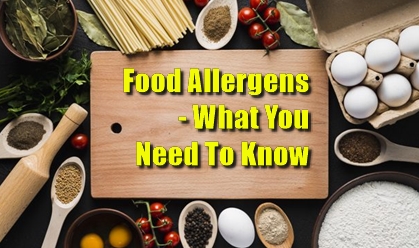On December 13th 2014 new regulations came in to force across the EU regarding Food Allergy labelling which affected all food outlets, including pubs. This guide to the new regulations will help you understand what Food Allergies are, how to manage ingredients and cooking processes and then communicate to your staff and customers any potential allergenic content in the food you prepare and sell.
The Rules In Brief
Allergen information should be easily accessible, visible and clearly legible
Where it isn’t practical for this information to be in a written format, pubs should use clear “signposting” to direct the customer to where this information can be found, such as asking members of staff.
Allergen information should be made available for the entire dish served, and where food is provided in a buffet format, it should be provided for each item separately.
Pubs providing allergen information orally from a member of staff must ensure it is consistent, accurate and verifiable upon challenge. Verification of this information should be provided in written form.
Why food allergy matters
When someone has a food allergy, eating even a small bit of that food can make them very ill, in some instances this can even be fatal, this reaction to an allergen is called anaphylaxis. You’ll probably have noticed on pre-packed food you buy from suppliers will already contain details of any allergy risks but up until now you as a caterer haven’t had to provide the same information to your customers, the change in the regulations will make it law for you too. So, when you are prepare and sell food it’s essential you to take food allergy seriously and incorporate both risk assessment and risk management associated with the named allergins in the regulations.
Which ingredients can cause a problem?
These are some of the ingredients people may be allergic to and where they may be found in finished products:
- Celery including celery stalks, leaves and seeds and celeriac, in salads, soups, celery salt, some meat products
- Cereals such as wheat, rye and barley and foods containing containing flour, such as bread, pasta, gluten cakes, pastry, meat products, sauces, soups, batter, stock cubes, breadcrumbs, foods dusted with flour
- Crustacea such as prawns, lobster, scampi, crab, shrimp paste
- Eggs in cakes, mousses, sauces, pasta, quiche, some meat products, mayonnaise, foods brushed with egg
- Fish in some salad dressings, pizzas, relishes, fish sauce and some soy and Worcestershire sauces
- Lupin seeds and flour in some types of bread and pastries
- Flour
- Milk in yoghurt, cream, cheese, butter, milk powders, foods glazed with milk
- Molluscs such as mussels, whelks, squid, land snails, oyster sauce
- Mustard including liquid mustard, mustard powder and mustard seeds, in salad dressings, marinades, soups, sauces, curries, meat products
- Nuts in sauces, desserts, crackers, bread, ice cream, marzipan, ground almonds, nut oils
- Peanuts in sauces, cakes, desserts, groundnut oil, peanut flour
- Sesame in bread, breadsticks, tahini, houmous, seeds sesame oil
- Soya as tofu or beancurd, soya flour and textured soya protein, in some ice cream, sauces, desserts, meat products, vegetarian products
- Sulphur in meat products, fruit juice drinks, dried dioxide fruit and vegetables, wine, beer
Some people may ask about other foods or substances to which they are allergic and these should be treated with equal importance and in the same manner, for example, tomato, banana, kiwi fruit or latex (natural rubber, as used in “rubber food handling gloves”).
You need to know if any of these allergens are in the food you buy in and prepare, so you will need to review every recipe you use in your menu to identify and record any potential allergen content, if in doubt contact the supplier concerned for guidance.
